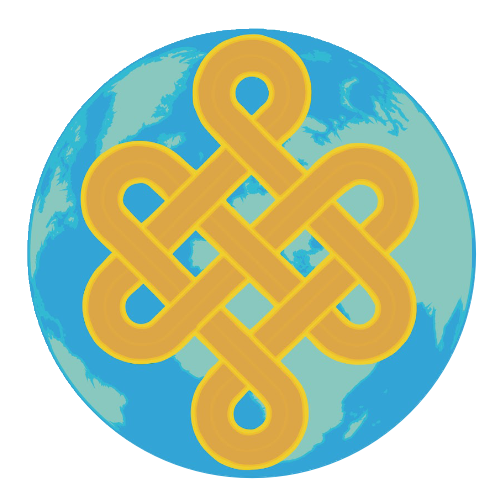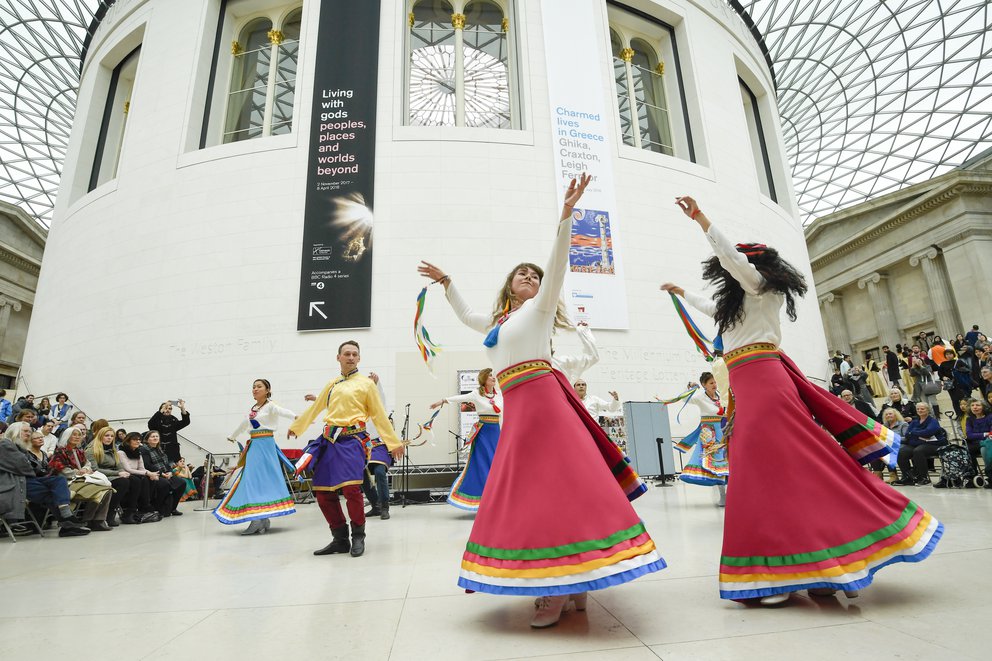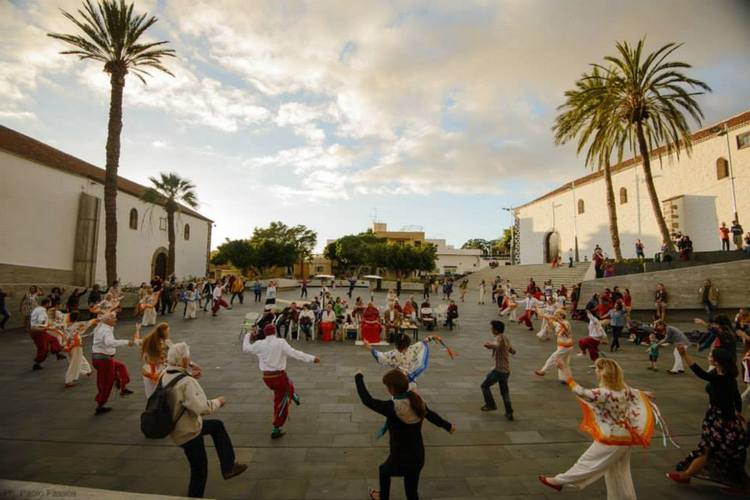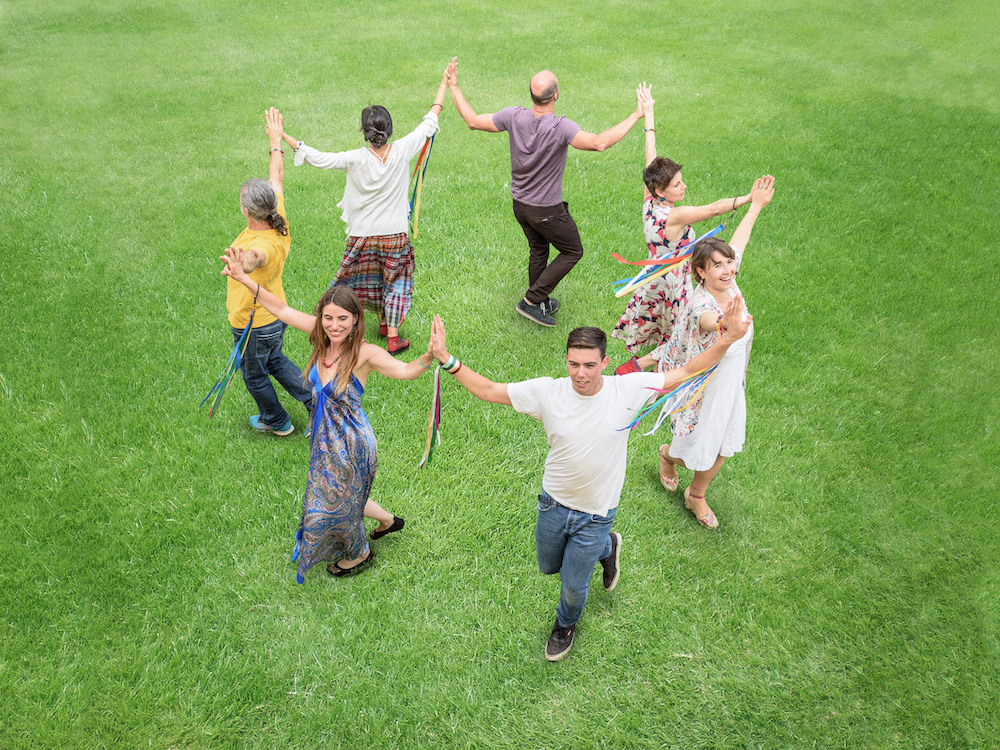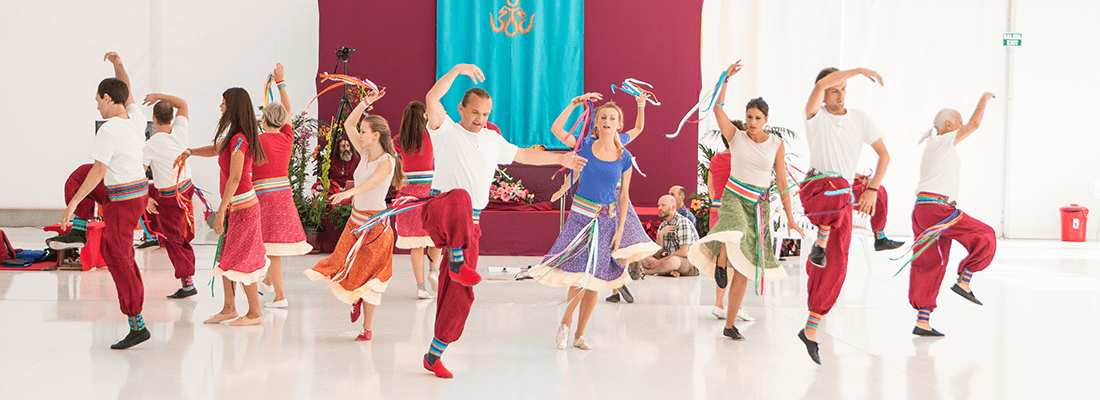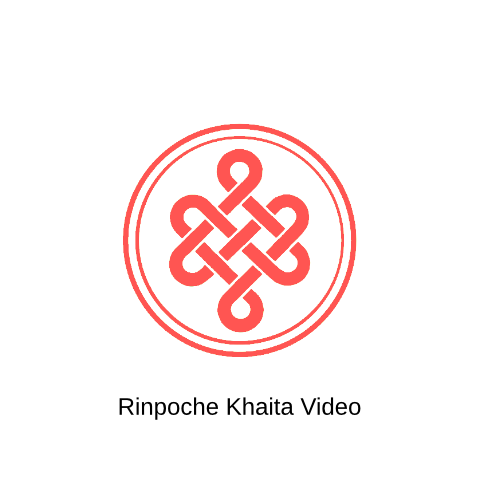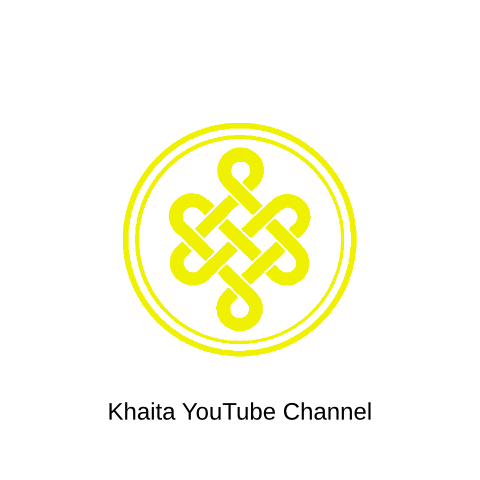Khaita means harmony in space
Kha = space / sky, Ta = harmony / melody.
Khaita, these words and the symbol (the golden infinite knot of love on our globe) were chosen by our Master in Dzamling Gar to represent all activities of the Dzogchen Community related to movements and sounds. Khaita Joyful Dances, Vajra Dance, Yantra Yoga, are all part of this.
Since 2011 Chögyal Namkhai Norbu has devoted himself to the research and promotion of Tibetan songs. Up until now Namkhai Norbu Rinpoche has personally transcribed 108 Tibetan songs, which are being widely embraced by his students around the world.
Chögyal Namkhai Norbu on the importance of singing and dancing
Kunsangar North, June 2014
You are moving, dancing, but I am dancing inside. I know how we should move with melody. So then I’m looking and I’m singing. If it doesn’t correspond I’m thinking ‘Oh this does not correspond, this does not correspond’. Sometimes then I say ‘Oh, we repeat.’ Maybe then it corresponds more. But in any case many people are learning, particularly when we are starting to do the Gordro group. When we were starting this Gordro in the second group at the beginning even we were dancing Gordro most people were not moving with the melody. But now most people everywhere know how we should follow all Gordros. Why? Because we did it many times everywhere. So this is very good. Because this is also part of the practice. Many people think ‘Oh this is only dance, not practice’. This is really practice. Because we are Dzogchen practitioners.
If we are practitioners of Sutra for example, we are following teaching of Sutra, then we receive vows, we have also rules, we should do everything perfect. Also if you are dancing maybe it is said to be contrary, this is not good. But principle of the Dzogchen teaching – we have body, speech and mind, all these three aspects should integrate in the sense of the teaching. If we are being always in the state of Guru Yoga, state of contemplation then it is ok, everything, there is no problem. But when we don’t know how we should integrate, of many things more important, more easy to integrate mental concepts. So mental concepts we need to lead with our presence. This is why in Dzogchen teaching it is said, ‘After Guru yoga which is most important? Being present.’ We are dancing with physical body, then we are singing with voice, and also mind is then dealing with that. This is practice. Also this is the best relaxation.
Otherwise we are always judging and thinking about our works, problems, all these things we are always continually thinking. When we are dancing that moment we are not thinking what we should do, which is my problem. So it is very good also for relaxing. It is important you know it’s part of the practice, dancing is not only worldly situation. Then dancing also is becoming very important. When you know then how we are dancing, it is dealing with songs, melodies, what it is saying with melody, also if we know these meanings, then there is double benefit. Even if we don’t know meaning, but only melody, then we follow it. Sometimes when you are singing some of these sounds, even if you don’t know meaning you are singing one time, two times, three times then in your mind this melody is returning. We are not necessarily thinking and judging that. That is connected with the energy. Energy is movement. So that way we are relaxed. This is the reason also I’m always starting with you with singing and being present. That is all.
(swipe with pointer or finger)
Chögyal Namkhai Norbu on Modern Tibetan Dances
Tenerife, February 2013
Milarepa said ‘any movement you do is Yantra’, just like you are doing Yantra Yoga or doing meditation or some exercise. Milarepa said ‘there is no difference’ because depend you, what you do everything, dealing with. Even if you are only jumping, but if you are jumping with presence, relaxed, then it become useful.
If you are interested of teachings Sutra, teachings Tantra, teachings Dzogchen, Anuyoga, everything is coming from Tibet. When I was in Tenerife last year, then I am listening some of this Tibetan music, songs, etc… and I discovered how they are singing, they are communicating happiness, a sort of feeling, and situation, which kind of difficulties they have they are bringing in the melody, this is how we do in Dzogchen Teaching.
We try to understand which is the real situation, we do our best, for that reason I am thinking …oh, it is necessary, we should learn songs and listening well Tibetan songs.
What do you need to do when you are dancing?…when you are dancing…coordinate, must being present. That means you are being present, otherwise you couldn’t dance, but if you are present when you are dancing you relax also, even jumping, not necessary charging ..no, you jump relaxed, then it become also good for you, no?It helps. Dancing, relaxing, being present, knowing that…this is practice, no? This is practice. No? How is it?



